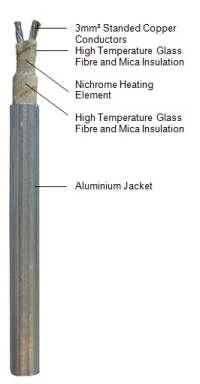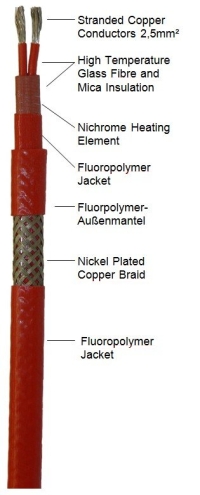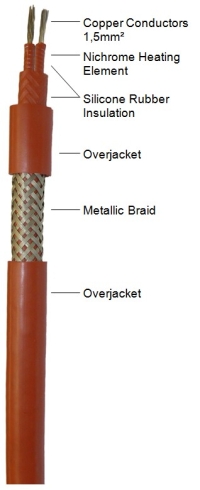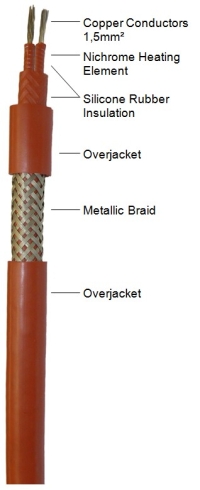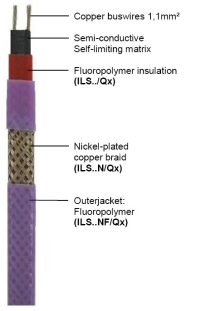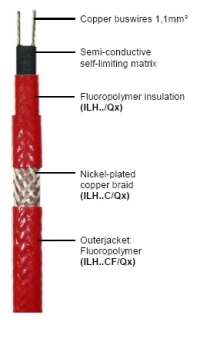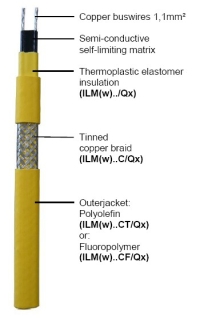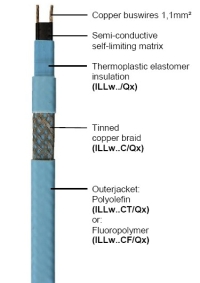-
Solutions
Our policies
Basics
HEAT LOSS
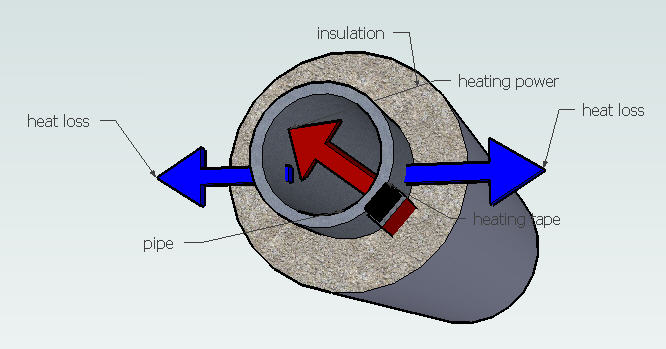
Trace heating systems are widely used wherever stored and transported materials are can not alone be protected by an insulation against heat loss. Each medium must be provided with a combination of trace heating and insulation to reach or maintain its optimal temperature..
With a temperature difference between inside the pipe to the ambient temperature outside the insulation, a heat loss constantly flow from the pipe(blue arrows).
Is the heater output (red arrow) equal or larger than the heat loss or higher the system is able to maintain or increase its temperature.
the heat loss of pipes is calculate with this equation:
Qv= (2 * pi * lambda * (Th - Tmin)) / (ln * (D/d))
Here you can calculate heat losses in a table online-->
Qv heat loss(W/m)
lambda thermal conductivity(W/mK)
Th maintain temperature (°C)
Tmin minimum ambient temperature (worst case °C)
ln natural logarithms
D pipe diameter with insulation(mm)
(pipe diamter+ 2 x insulation thickness)
d outer pipe diamter without insualtion(mm)
Here the appilcation of the theory: trace heating design incl. bill of material-->
HEAT LOSS OF TANKS, VESSELS
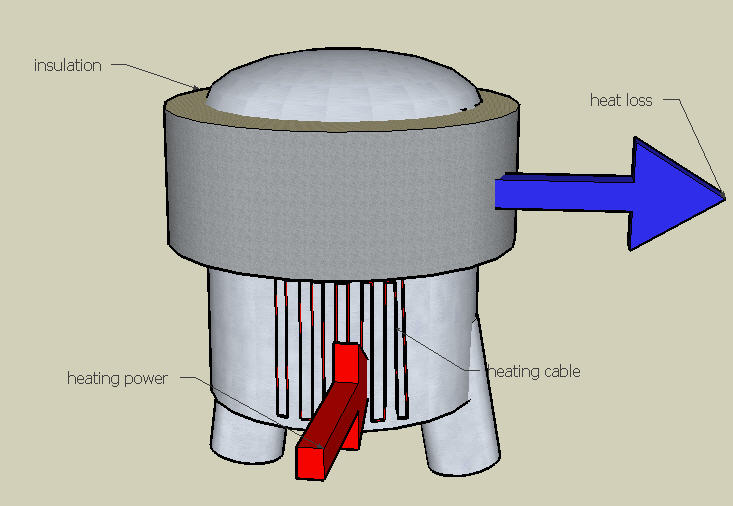
the formula to calculate the heat loss of a tank it similar:
Qv= (A * lambda * (Th - Tmin)) / s
Qv= total heat loss(W)
A = total tank surface ( m²)
s = insulation thickness (meter!)
(all other see above)
THERMAL INSULATION
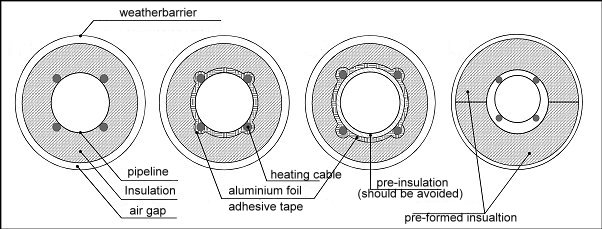
As can be easy seen from the above-mentioned formulas and presentation, the thermal insulation of the plants is a very essential part for the fulfillment of the requirements for the accompanying heating. In Germany, detailed description of the execution of thermal insulation for heating systems in the accompanying worksheet AGI Q103 to find. See at your local installation regulations/recommendations for doing insulation of electrical trace heating.
Criteria for selection of thermal insulation.
- thermial properties (thermal conductivity and dependence on high temperature),
- mechanical properties,
- chemiical resistance
- moisture resistance
- flammability,
Different ways of installation of thermal insulation: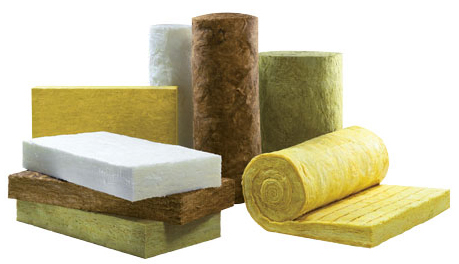
- insulation applied directly on the heater
- insulation on aluminium foil or adhesive tape wraped around the heater
- insulation of pipe with pre insulation (very expensive)
- insulation with pre-formed elements


